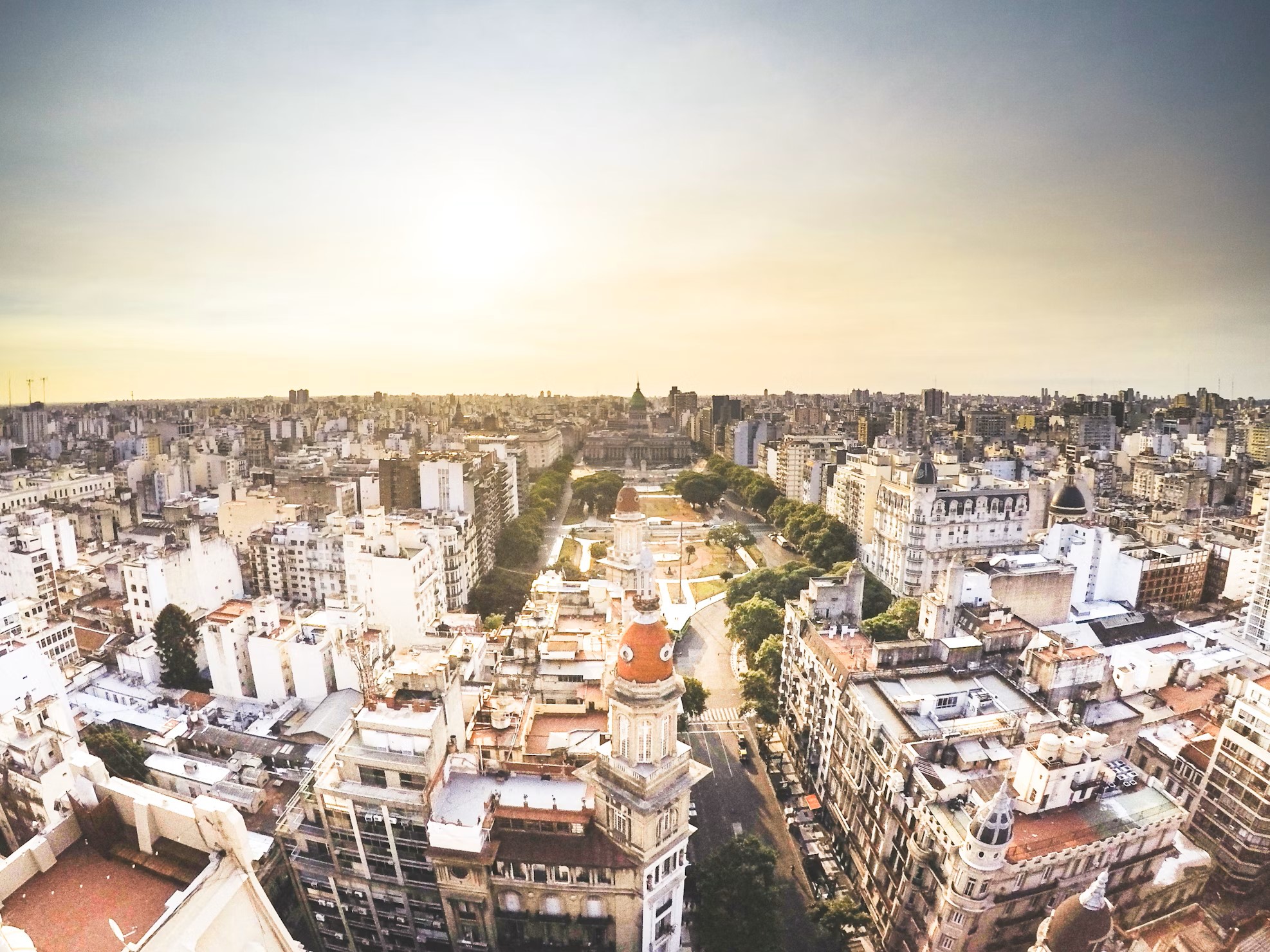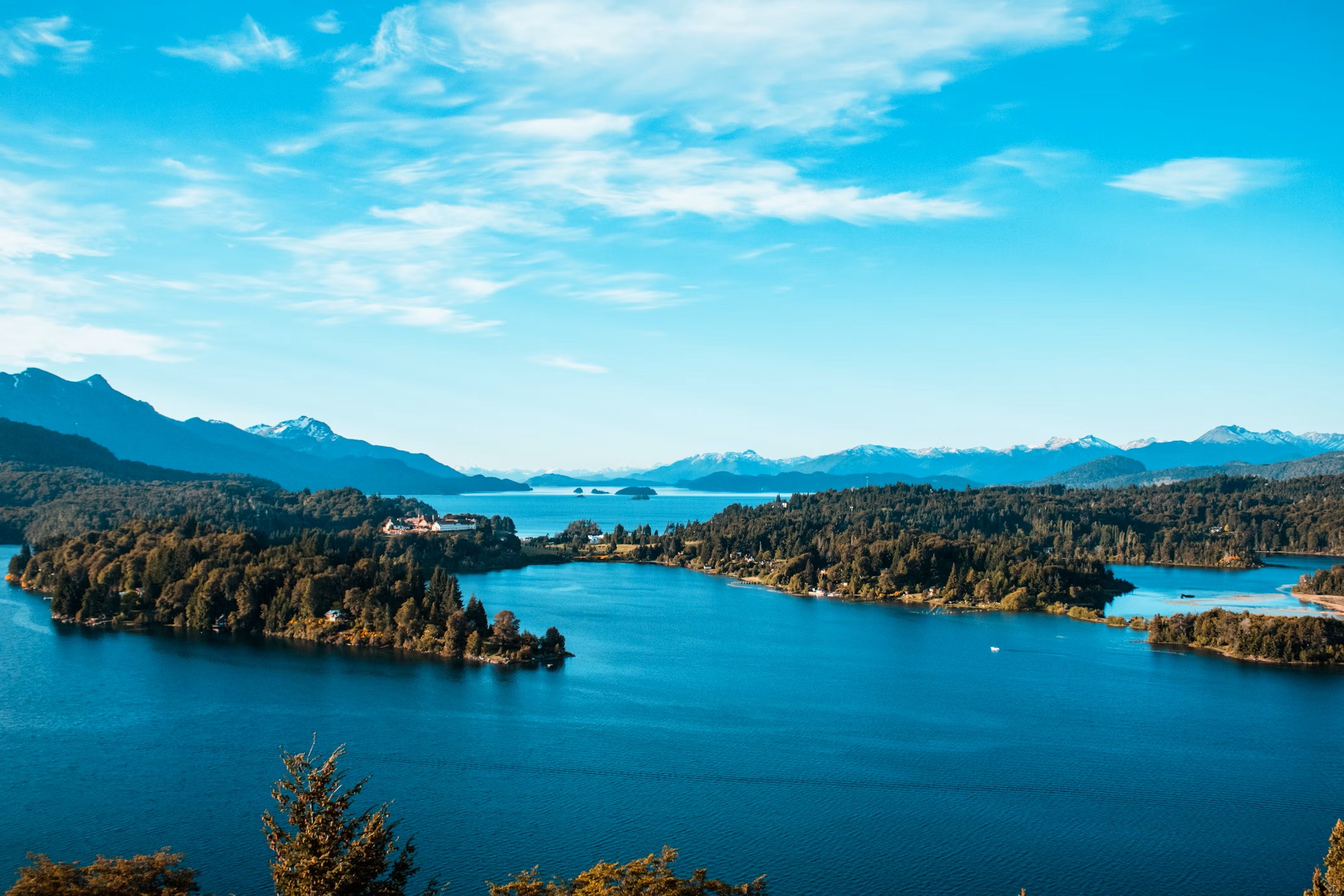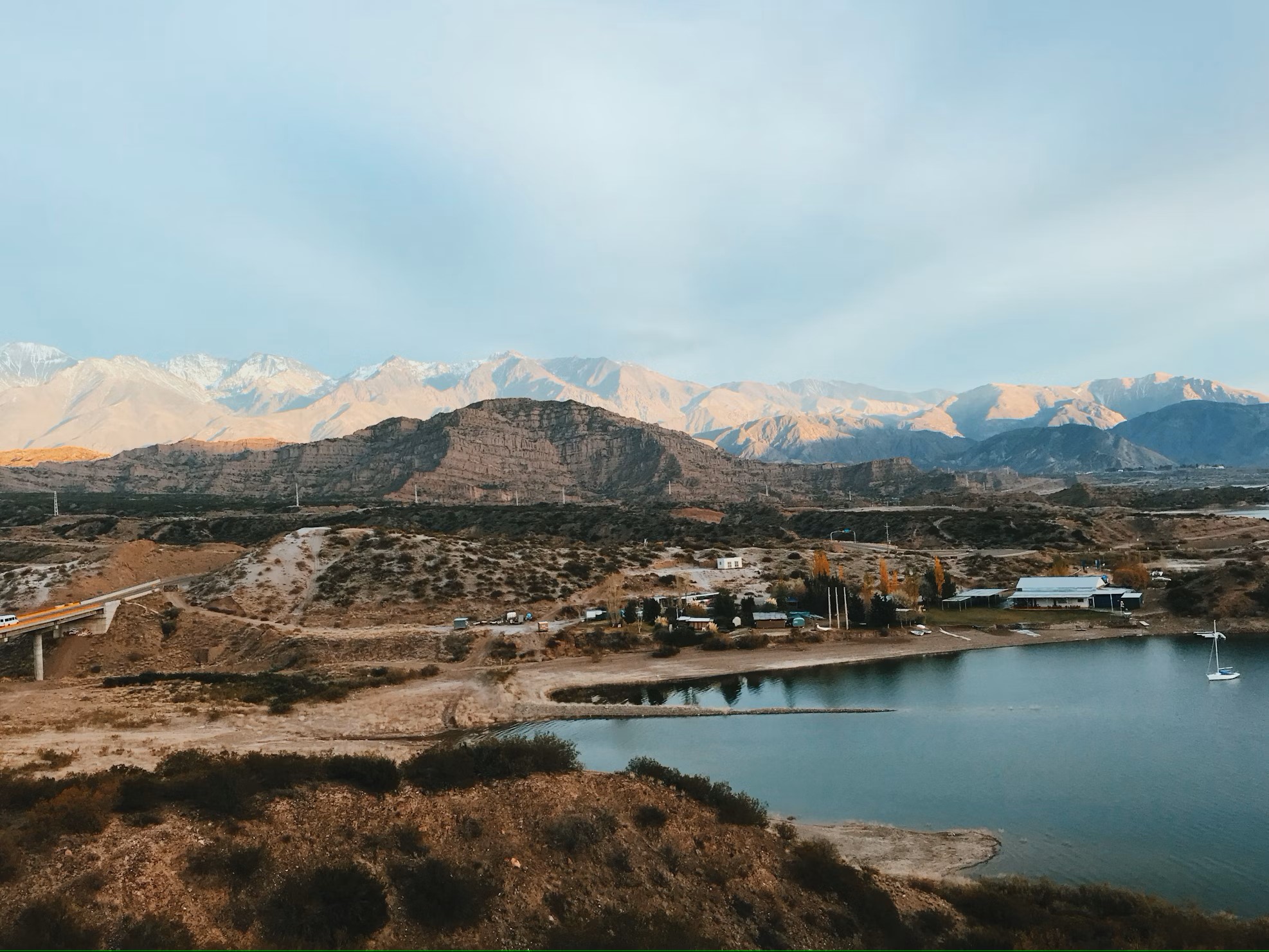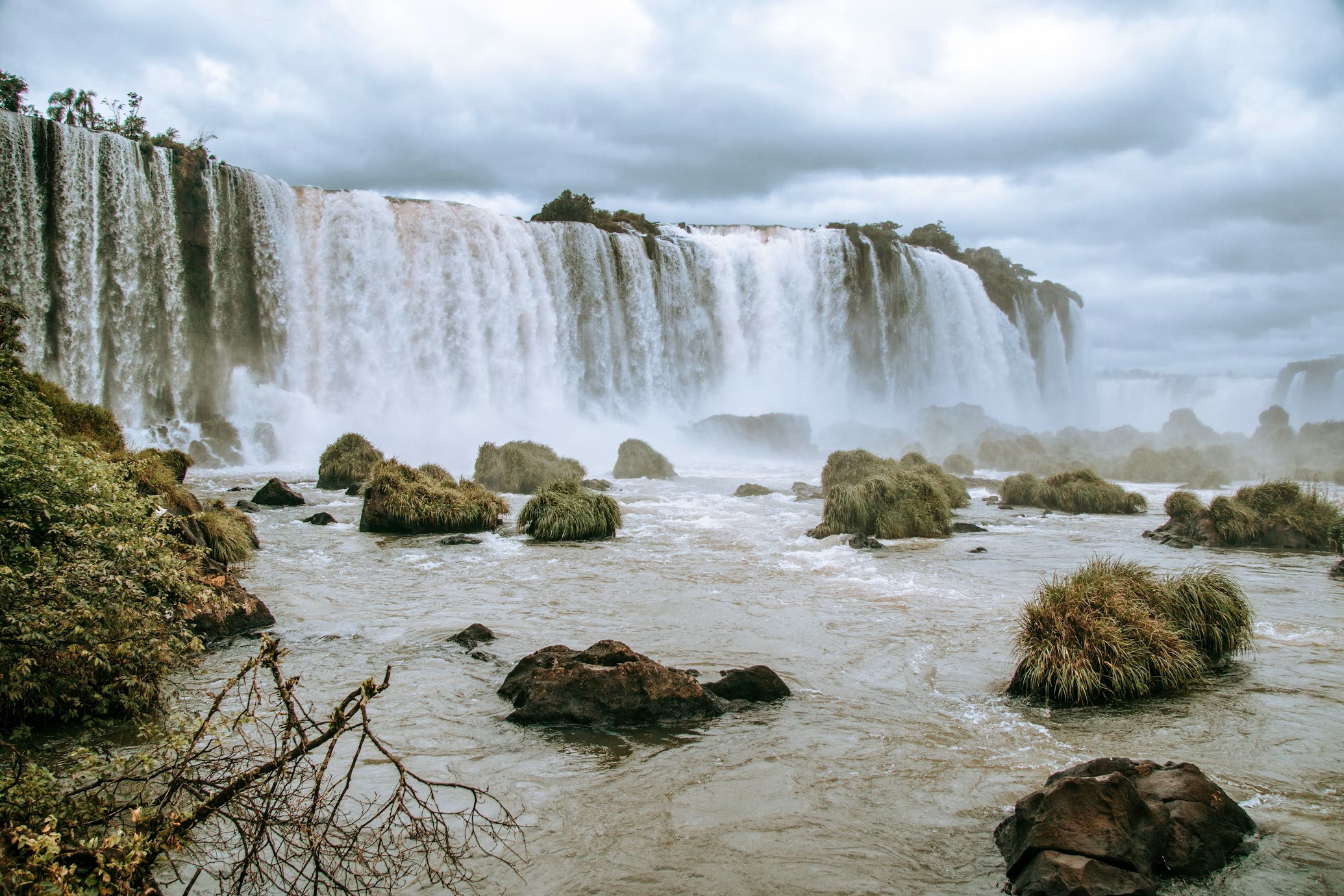Free 2 Week Argentina Itinerary Template
2 Week Argentina Itinerary
Hello, I am [YOUR NAME], and welcome to this beautifully curated personal guide to your two-week adventure in Argentina. Based on my experience at [YOUR COMPANY NAME], exploring vast cultures and destinations, I've carefully planned out this itinerary to ensure you have a unique and memorable experience in this South American gem.
Day 1-3: Buenos Aires

Begin your journey in Buenos Aires, the vibrant capital of Argentina. Spend a day touring the historic San Telmo, exploring the vibrant street market, and a visit to the iconic Teatro Colón. In the evening, indulge in a passionate Tango class. The next day, sample Argentina's culinary delights, including the renowned steak and empanadas.
Buenos Aires offers a variety of attractions and experiences that contribute to its beauty and charm:
-
Architectural Marvels: The city boasts stunning architecture influenced by various styles, including neoclassical, art deco, and modernist.
-
Cultural Diversity: Buenos Aires is a melting pot of cultures, reflected in its diverse neighborhoods, each with its unique character and atmosphere.
-
Tango and Music: As the birthplace of tango, Buenos Aires pulsates with the rhythm and passion of this sensual dance.
-
Green Spaces: Despite being a bustling metropolis, Buenos Aires offers numerous parks and green spaces where visitors can relax and unwind.
-
Cuisine: Food lovers will delight in Buenos Aires' culinary scene, which blends traditional Argentine flavors with international influences.
-
Cultural Heritage: Buenos Aires is steeped in history and culture, with museums, galleries, and cultural institutions showcasing the country's rich heritage.
Overall, Buenos Aires' beauty lies in its unique blend of history, culture, and creativity, making it a captivating destination for travelers from around the world.
Day 4-6: Bariloche

Fly to Bariloche, situated in Nahuel Huapi National Park. Enjoy trekking, horseback riding, or a serene boat ride in the breathtaking lakes and forests that surround you. Feast on Switzerland-influenced cuisine such as Fondue and local Chocolate.
Bariloche, officially San Carlos de Bariloche, is a picturesque city nestled in the Argentine Patagonia region. While it's famous for its stunning landscapes and outdoor activities, there are also some hidden gems and secret beauties to discover:
-
Hidden Lakes: Beyond the well-known Nahuel Huapi Lake, Bariloche is surrounded by numerous smaller lakes and lagoons that are often less crowded and offer tranquil settings for relaxation or exploration. Some of these hidden gems include Lake Gutierrez, Lake Mascardi, and Lago Escondido (Hidden Lake).
-
Off-the-Beaten-Path Trails: While popular trails like the Circuito Chico offer breathtaking views, there are lesser-known hiking trails that lead to hidden waterfalls, secluded forests, and panoramic vistas. Exploring these off-the-beaten-path routes allows visitors to experience the raw beauty of Patagonia away from the crowds.
-
Local Cuisine: While chocolate is a well-known delicacy in Bariloche, there are also hidden culinary treasures to be found beyond the main tourist areas. Seek out local eateries and bakeries frequented by residents to sample traditional Argentine dishes like lamb asado, regional cheeses, and homemade pastries
-
Scenic Drives: Bariloche is surrounded by stunning scenery, and some of the most beautiful sights can be discovered by taking scenic drives off the main roads. Renting a car or joining a guided tour allows visitors to explore hidden valleys, remote viewpoints, and charming mountain villages.
-
Hidden Beaches: Bariloche is not typically associated with beaches, but there are secluded shores along the shores of its lakes where visitors can enjoy sunbathing, swimming, and picnicking in a peaceful setting. These hidden beaches offer a chance to relax and soak in the natural beauty of the Patagonian landscape.
Exploring these hidden gems allows visitors to uncover the lesser-known beauty of Bariloche and experience the authentic charm of this enchanting Patagonian city.
Day 7-9: El Calafate

Next, fly to El Calafate, the gateway to Los Glaciares National Park. Here, witness the stunning Perito Moreno Glacier. Take a boat tour for a close-up view of this magnificent wonder, and enjoy a guided walk on the ice.
El Calafate, located in the Argentine Patagonia region, is a popular destination known for its stunning natural beauty and proximity to the awe-inspiring Perito Moreno Glacier. Some of the main attractions in El Calafate include:
-
Perito Moreno Glacier: One of the most famous glaciers in the world, Perito Moreno Glacier is a must-see attraction in El Calafate.
-
Glacier National Park: El Calafate serves as a gateway to Glacier National Park (Parque Nacional Los Glaciares), a UNESCO World Heritage Site renowned for its pristine wilderness and numerous glaciers.
-
Glacier Viewing Platforms: Several viewing platforms and walkways have been constructed near Perito Moreno Glacier, allowing visitors to admire its beauty from different vantage points.
-
Boat Tours: Boat tours are a popular way to explore the lakes and glaciers around El Calafate. Visitors can cruise through the icy waters of Lake Argentino to see glaciers up close and observe the unique wildlife that inhabits the region, including Andean condors, eagles, and occasionally, pumas.
-
Estancia Cristina: Located within Glacier National Park, Estancia Cristina is a historic Patagonian ranch that offers guided tours and activities. Visitors can learn about the region's history, hike to viewpoints overlooking Upsala Glacier, and enjoy traditional Patagonian cuisine at the estancia's restaurant.
These attractions make El Calafate a captivating destination for nature lovers and outdoor enthusiasts seeking to explore the breathtaking landscapes of Argentine Patagonia.
Day 10-11: Mendoza

A trip to Argentina would be incomplete without a visit to Mendoza, the heart of Argentina's wine country. Spend your days touring vineyards, learning about the winemaking process, and, of course, wine tasting.
Mendoza, located in the foothills of the Andes in western Argentina, is renowned for its wine production, stunning landscapes, and outdoor activities. Here are some of the top attractions in Mendoza:
-
Wine Tours and Tastings: Mendoza is one of the most important wine regions in Argentina, famous for its Malbec wines. Visitors can explore the region's numerous wineries, known as bodegas, where they can take guided tours, learn about the winemaking process, and enjoy tastings of locally produced wines.
-
Aconcagua Provincial Park: This park is home to Mount Aconcagua, the highest peak in the Americas, standing at approximately 6,959 meters (22,831 feet). Even for those not planning to climb the mountain, the park offers stunning scenery, hiking trails, and opportunities for outdoor activities such as trekking and wildlife watching.
-
Plaza Independencia: Mendoza's main square, Plaza Independencia, is a bustling hub surrounded by historic buildings, shops, cafes, and restaurants. It's a great place to relax, people-watch, and soak up the atmosphere of the city.
-
Cerro de la Gloria: This hill located within General San Martín Park offers panoramic views of Mendoza and the surrounding region. At the summit, visitors can find the Monument to the Army of the Andes, commemorating General San Martín's liberation campaign.
-
General San Martín Park: This expansive park is one of the largest in Argentina, offering opportunities for outdoor recreation such as walking, jogging, cycling, and picnicking. Within the park, visitors can also find attractions such as the Cerro de la Gloria, a zoo, a rose garden, and a lake.
These attractions make Mendoza a popular destination for wine enthusiasts, outdoor adventurers, and anyone looking to experience the natural beauty and rich culture of Argentina's wine country.
Day 12-14: Iguazu Falls

For the last leg of your journey, fly to the Argentinian province of Misiones to experience the awe-inspiring natural wonder of Iguazu Falls. Take a boat tour under the falls and explore the rich biodiversity of the surrounding rainforest before returning to Buenos Aires for your departure.
Visiting Iguazu Falls, one of the most breathtaking natural wonders in the world, offers an unforgettable experience. Here are some recommendations for making the most of your visit:
-
Explore Both Sides: Iguazu Falls straddles the border between Argentina and Brazil, with each side offering a different perspective and experience of the falls.
-
Devil's Throat: On the Argentine side, don't miss the chance to walk along the series of walkways leading to the iconic Devil's Throat (Garganta del Diablo).
-
Boat Tours: For a thrilling adventure and a unique perspective of the falls, consider taking a boat tour that ventures close to the base of the cascades.
-
Upper and Lower Circuits: The Argentine side offers both upper and lower circuits that provide different viewpoints of the falls.
-
Birdwatching and Wildlife: Iguazu National Park is home to a diverse array of wildlife, including colorful birds, butterflies, and coatis (raccoon-like animals).
-
Macuco Trail: On the Brazilian side, the Macuco Trail offers a scenic hike through the rainforest with opportunities for wildlife spotting.
-
Visit the Bird Park: Adjacent to the entrance of Iguazu National Park on the Brazilian side, the Bird Park (Parque das Aves) is a must-visit attraction for bird enthusiasts.
-
Photography: Be sure to bring a camera or smartphone with plenty of storage space to capture the incredible beauty of the falls from various viewpoints.
By following these recommendations, you can have a truly memorable and enriching experience exploring the majestic Iguazu Falls and its surrounding natural wonders.
This guide promises you a journey full of unforgettable experiences and memories to cherish for a lifetime. Argentina is a country with an abundance of natural beauty, cultural heritage, and delectable cuisine. It's time to immerse and lose yourself in the beauty of this amazing country. Safe travels!